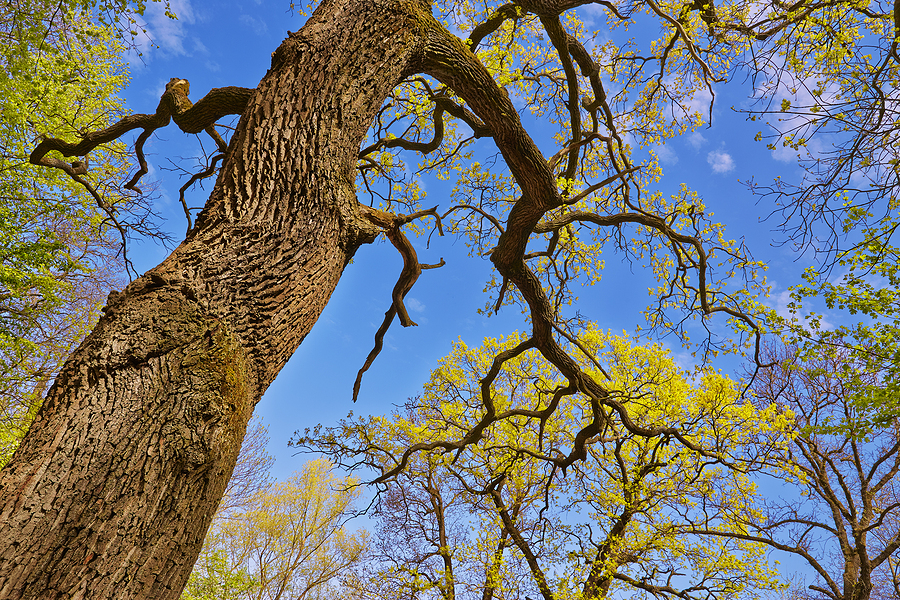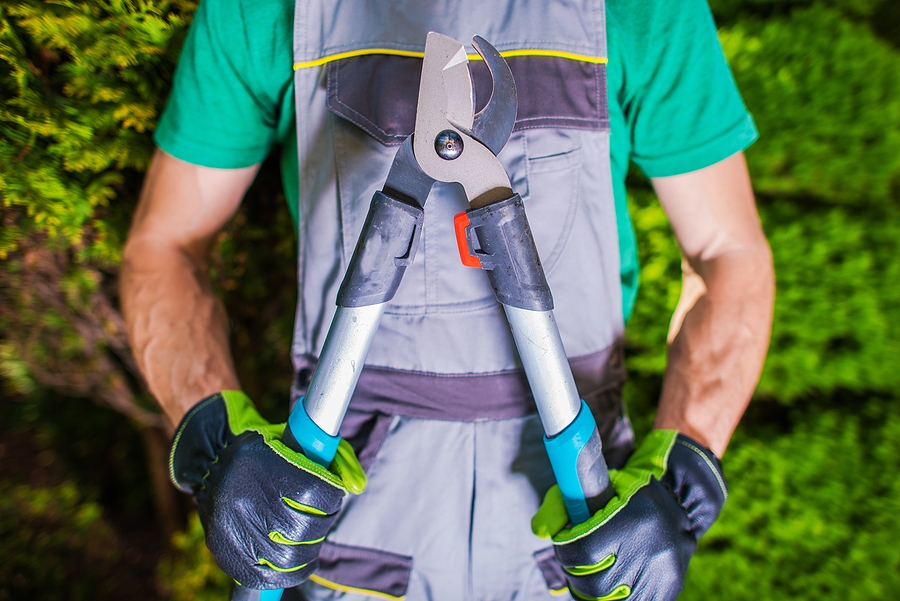Mature trees are the anchors of our landscapes, providing shade, beauty, and a connection to the past. Across Indiana, from the bustling streets of Indianapolis to the quiet neighborhoods of Bloomington, these old trees define our properties and communities. But caring for old trees comes with unique challenges. They require specialized attention to stay healthy and safe for years to come.
This guide offers essential tree care tips specifically for Indiana property owners. We will cover how to spot common problems, implement preventative maintenance, and understand when to call in a professional tree service. Following these steps will help you protect your valuable trees, ensuring they remain a source of pride and joy for your family.

Identifying Common Issues in Indiana’s Mature Trees
The first step in effective mature tree care is recognizing the signs of trouble. Indiana’s climate and local ecosystem present specific challenges, from invasive pests to aggressive diseases. Early identification is key to successful treatment and can save you from the high cost of removal later on.
Pests to Watch For:
Emerald Ash Borer (EAB)
This invasive beetle has devastated ash tree populations across the state. Signs of an EAB infestation include D-shaped exit holes in the bark, thinning canopy, and vertical splits in the bark. If you have an ash tree, it’s not a matter of if it will be affected, but when. Proactive treatment is essential.
Japanese Beetles
These pests are less deadly than EAB but can cause significant damage, particularly to maples, sycamores, and fruit trees. They skeletonize leaves, leaving behind a lace-like pattern. While a healthy mature tree can often withstand an infestation, repeated attacks can weaken it over time.
Common Tree Diseases:
Oak Wilt
This fungal disease is a major threat to Oak trees, especially Red Oaks, in areas like Carmel and Fort Wayne. Symptoms include rapid leaf discoloration, wilting, and premature leaf drop, typically starting at the top of the tree and moving downward. Oak Wilt can kill a tree in a single season, so immediate action is critical if you suspect an infection.
Anthracnose
A common fungal disease affecting Sycamore and Maple trees, Anthracnose thrives in cool, wet spring weather. It causes dark, sunken lesions on leaves, stems, and twigs. While usually not fatal to a healthy mature tree, it can cause significant defoliation and stress, making the tree more vulnerable to other problems.
Environmental Stressors:
Beyond pests and diseases, mature trees face stress from their environment. Soil compaction from foot traffic or construction, drought conditions during Indiana summers, and damage from storms can all impact tree health. Watch for signs like a thinning canopy, undersized leaves, or dead branches.
Preventative Care for Long-Term Tree Health
Proactive tree maintenance is the most effective way to protect your mature trees. A consistent care routine helps your trees build resilience against pests, diseases, and environmental stress.
Watering and Mulching
Proper watering is crucial, especially during dry spells. Mature trees need a deep, slow soaking rather than frequent, shallow watering. This encourages deep root growth. A good rule of thumb is to provide about 10 gallons of water for every inch of the trunk’s diameter.
Mulching is one of the best things you can do for your trees. A 2-4 inch layer of organic mulch helps retain soil moisture, regulate soil temperature, and suppress weeds. Be sure to keep the mulch a few inches away from the tree trunk to prevent moisture buildup, which can lead to rot.
Tree Fertilization
While not always necessary for trees in a natural forest setting, trees in urban and suburban yards often benefit from fertilization. The soil on residential properties can lack the rich organic matter found in forests. A soil test can determine if your tree has any nutrient deficiencies. A professional tree service can then apply a slow-release fertilizer to promote vigorous growth and improve overall tree health.
Routine Professional Tree Service
Regular inspections and maintenance from a certified tree service providers are vital for caring for old trees. Professionals can spot early signs of trouble that homeowners might miss. Key services include:
- Pruning: Strategic pruning removes dead, diseased, or crossing branches, improving the tree’s structure and safety. It also allows for better air circulation and light penetration, reducing the risk of fungal diseases.
- Trimming: Trimming involves removing overgrown or interfering branches to maintain the tree’s shape and size. It can also improve aesthetics, open up views, and prevent damage to nearby structures.
- Inspections: An annual inspection can identify potential hazards, such as weak branches or signs of decay, before they become a serious risk to your property.
- Cabling and Bracing: For trees with weak limbs or multiple trunks, support systems like cables and braces can provide stability and reduce the risk of failure during severe weather.
Finally, remember local regulations. If your tree is near power lines, contact your utility company, like Duke Energy or Indiana Michigan Power, for their guidelines on safe tree pruning and maintenance.
Contact Us Now to Schedule a Tree Inspection! 📲
Frequently Asked Questions
How often should mature trees be inspected by a professional?
It’s recommended to have mature trees inspected by a certified arborist annually. This allows for early detection of potential issues like disease, pests, or structural weaknesses that could become hazardous.
What are the signs of Emerald Ash Borer infestation in Indiana?
Key signs include a thinning canopy, D-shaped exit holes in the bark (about 1/8-inch in diameter), vertical bark splits, and increased woodpecker activity.
How can I protect my mature trees from Oak Wilt?
Avoid pruning oak trees from April to July when the fungus is most active. If pruning is necessary during this time, immediately seal the wounds. If you suspect an infection, contact a professional tree service immediately for diagnosis and management options.
What type of mulch is best for Indiana trees?
Organic mulches like shredded hardwood bark or wood chips are excellent choices. They decompose over time, adding valuable nutrients to the soil and improving its structure.
When is the best time to prune mature trees in Indiana?
The best time to prune most mature trees is during their dormant season in the late fall or winter. This minimizes stress on the tree and reduces the risk of disease transmission.
How much water do mature trees need during a drought?
During a drought, a mature tree needs a deep, slow watering every few weeks. Use a soaker hose or drip irrigation system to apply water directly to the root zone, allowing it to penetrate deep into the soil.
What are the benefits of fertilizing mature trees?
Fertilizing can improve a tree’s vigor, enhance leaf color and size, and increase its resistance to pests and diseases, especially for trees growing in nutrient-poor urban soils.
How do I identify and manage Japanese Beetles on my trees?
Japanese Beetles have metallic green heads and copper-colored wing covers. They feed in groups and skeletonize leaves. For small infestations, you can hand-pick them off plants. For larger problems, a professional can recommend appropriate treatments.
What is tree cabling and bracing, and when is it necessary?
Cabling and bracing involves installing flexible steel cables and rigid rods to support weak branches or multiple trunks. It is necessary when a mature tree has structural defects that pose a risk of failure, helping to preserve the tree and protect your property.
How can I tell if my mature tree is a safety hazard?
Look for large dead branches, cracks or splits in the trunk or major limbs, signs of decay (like mushrooms growing on the tree), and a significant lean. If you see any of these signs, it’s crucial to have the tree assessed by a certified arborist.
Key Takeaways
Caring for mature trees is a long-term commitment that pays us back in immense environmental and aesthetic benefits. By being proactive with routine tree service and vigilant for signs of trouble, you can ensure your trees remain a healthy, beautiful, and safe part of your Indiana property for generations. Don’t wait for a problem to arise.
If you have concerns about your mature trees or want to schedule a professional inspection, contact us today. Our certified tree service pros are here to help you protect your valuable natural assets.
Related Post: Tips for Watering an Old Tree









